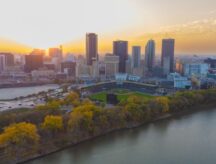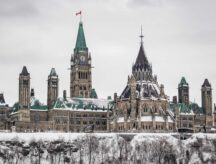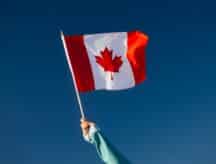What you need to know before moving to Manitoba
Manitoba is one of Canada’s most immigrant-friendly provinces—one of the first to institute its own Provincial Nominee Program (PNP). Often noted for its low-cost of living, warm locals, and affordable housing; Manitoba has a dry climate that can feature sharp weather changes depending on the season. Most people immigrating to Manitoba will go the one of the province’s two major cities: Winnipeg (Manitoba’s capital) or Brandon.
Read on for essential information you need to know before moving to Manitoba.
Discover if You Are Eligible for Canadian Immigration
Housing
Manitoba offers some of the most affordable housing options in the country, both for buying and renting. In addition, the province’s two biggest cities offer a variety of housing options including condo apartments, duplexes, dethatched homes and more.
This affordability is attributed not only to lower municipal property taxes and utility costs but also to the extensive housing programs in Manitoba. These programs offer various subsidized housing options to eligible residents. To qualify for these programs, in addition to having a complete application, residents must:
- Have a total adjusted household income that falls at or below the rental Program Income Limits (PILs);
- Be in core housing need;
- Be a Canadian citizen or permanent resident;
- Provide a rental history; and
- Either pay off any outstanding debt owed to the program or enter into an approved payment plan.
It is important to note that this housing program is not available to international students or permanent residents who obtained their status through family class sponsorship. For more information on Manitoba's housing programs, you can visit the provided link here.
In July of 2023, the Manitoban government committed to investing $67 million CAD to support 89 capital housing projects across the province.
Commuting
Much of Manitoba’s public transit system is located in the province’s capital of Winnipeg. Residents of the city have access to two main forms of public transport: the city metro, and the public bus transit.
The metro system, named the “BLUE Rapid Transit Line”, offers routes between downtown Winnipeg, the University of Manitoba, and St. Norbert, with multiple stations in between.
The public bus system in Winnipeg similarly provides fixed route bus services that operate year-round and during late-night hours. In addition, some buses offer limited routes from Winnipeg to other cities in Manitoba.
Both these systems operate with a fare card known as a “peggo”, which commuters can use to pay for their trip. For more information on peggo cards, click here. For more information on fare prices in Winnipeg, click here.
Employment
Manitoba has historically had strong demand for skilled workers. The Manitoba Provincial Nominee Program (MPNP)—one of the first PNPs in Canada—was created to address this demand by selecting skilled workers from around the world and nominating them for permanent residence (PR) in Canada.
Manitoba traditionally has a low unemployment rate and a high rate of labour force participation. The province's largest sectors of employment are wholesale and retail trade, healthcare and social assistance, and manufacturing. The minimum wage in Manitoba (as of October 1st) is $15.30 CAD per hour.
Some of the largest employers in Manitoba include the Manitoba Health Services Insurance Plan, Canada Life Assurance Company, Bell MTS, the University of Manitoba, IGM Financial, and Manitoba Hydro.
For more information on finding and securing employment in Canada, you can visit a dedicated webpage here.
Education
Manitoba offers a wide range of educational opportunities for K-12 students. Both public and private schools operate within the province—particularly in Winnipeg. Students typically begin kindergarten at age five and complete high school at age seventeen or eighteen.
The education system in Manitoba covers a broad range of subjects, including English and/or French language studies, arts, health, science, and social studies. Programs and resources are also available to support students with diverse learning needs. The education system in Manitoba emphasizes active learning experiences, including field trips and outdoor activities. Indigenous perspectives and traditions are also integrated into the curriculum.
Parents, teachers, and students can find detailed information about the curriculum and policies on the government's education website. Resources are also available to help students learn what to expect from school, and how to transition smoothly between different levels of schooling.
Post-secondary education in Manitoba is offered by universities and colleges, providing a range of programs from practical training to theoretical degrees. These institutions offer certificate and diploma courses, as well as undergraduate and post-graduate degrees (including master's and doctorates). Pre-professional and professional degree programs in various disciplines are also available.
International students looking to study in Canada must enroll at a school that is a Designated Learning Institution (DLI)—the only schools in Canada able to accept international students. Visit our webpage on studying in Manitoba for a list of DLIs in the province.
Taxation
In Manitoba, the income tax rates can vary from 10.8% to 17.4%. When combined with the federal tax, the total tax burden can range from 25.8% to 50.4%.
Instead of having a single harmonized consumption tax on goods and services, Manitoba has separate taxes for goods and services. The Goods and Services Tax (GST) is 7% nationally, while the Provincial Sales Tax (PST) is also 7% specifically for Manitoba. It's important to note that PST is applied to the original price of the product before GST is calculated on top.
For more information on how to file personal income returns in Canada, you can visit our dedicated webpage here.
Newcomer Services
Newcomer settlement services are services run at the federal, provincial, and municipal level for newcomers to Canada. Note that depending on both your legal status in Canada, and where you reside, you may or may not be eligible for these services. While most services are available for permanent residents and some temporary residents, it is recommended to get into contact with the specific service provider you wish to visit, to clarify eligibility.
The government of Manitoba categorizes their settlement services into the following categories:
- Newcomer Arrival and Settlement Services;
- Neighborhood Immigrant Settlement Workers (NISW);
- Health and Family Supports;
- Employment Supports;
- Adult Language Training Programs;
- Services de soutien francophone (French support services);
- Colleges and Universities;
- Hospitals;
- Libraries; and
- Other Government Services.
The provincial government of Manitoba has compiled a list of service providers on an online map tool, which can be accessed here.
For more information on free newcomer settlement services in Canada, you can visit our dedicated webpage here.
- Do you need Canadian immigration assistance? Contact the Contact Cohen Immigration Law firm by completing our form
- Send us your feedback or your non-legal assistance questions by emailing us at media@canadavisa.com







